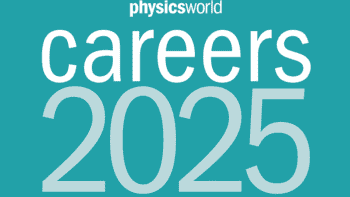A new approach to medical device testing could ensure that new devices meet the needs of the entire patient population. Sheena Macpherson tells Tami Freeman about the promise of in silico trials

Medical devices are thoroughly tested before being introduced into the clinic. But traditional testing approaches do not fully account for the diversity of patient populations. This can result in the launch to market of devices that may underperform in some patient subgroups or even cause harm, with often devastating consequences.
Aiming to solve this challenge, University of Leeds spin-out adsilico is working to enable more inclusive, efficient and patient-centric device development. Launched in 2021, the company is using computational methods pioneered in academia to revolutionize the way that medical devices are developed, tested and brought to market.
Sheena Macpherson, adsilico’s CEO, talks to Tami Freeman about the potential of advanced modelling and simulation techniques to help protect all patients, and how in silico trials could revolutionize medical device development.
What procedures are required to introduce a new medical device?
Medical devices currently go through a series of testing phases before reaching the market, including bench testing, animal studies and human clinical trials. These trials aim to establish the device’s safety and efficacy in the intended patient population. However, the patient populations included in clinical trials often do not adequately represent the full diversity of patients who will ultimately use the device once it is approved.
Why does this testing often exclude large segments of the population?
Traditional clinical trials tend to underrepresent women, ethnic minorities, elderly patients and those with rare conditions. This exclusion occurs for various reasons, including restrictive eligibility criteria, lack of diversity at trial sites, socioeconomic barriers to participation, and implicit biases in trial design and recruitment.

As a result, the data generated from these trials may not capture important variations in device performance across different subgroups.
This lack of diversity in testing can lead to devices that perform sub-optimally or even dangerously in certain demographic groups, with potentially life-threatening device flaws going undetected until the post-market phase when a much broader patient population is exposed.
Can you describe a real-life case of insufficient testing causing harm?
A poignant example is the recent vaginal mesh scandal. Mesh implants were widely marketed to hospitals as a simple fix for pelvic organ prolapse and urinary incontinence, conditions commonly linked to childbirth. However, the devices were often sold without adequate testing.
As a result, debilitating complications went undetected until the meshes were already in widespread use. Many women experienced severe chronic pain, mesh eroding into the vagina, inability to walk or have sex, and other life-altering side effects. Removal of the mesh often required complex surgery. A 2020 UK government inquiry found that this tragedy was further compounded by an arrogant culture in medicine that dismissed women’s concerns as “women’s problems” or a natural part of aging.
This case underscores how a lack of comprehensive and inclusive testing before market release can devastate patients’ lives. It also highlights the importance of taking patients’ experiences seriously, especially those from demographics that have been historically marginalized in medicine.
How can adsilico help to address these shortfalls?
adsilico is pioneering the use of advanced computational techniques to create virtual patient populations for testing medical devices. By leveraging massive datasets and sophisticated modelling, adsilico can generate fully synthetic “virtual patients” that capture the full spectrum of anatomical diversity in humans. These populations can then be used to conduct in silico trials, where devices are tested computationally on the virtual patients before ever being used in a real human. This allows identification of potential device flaws or limitations in specific subgroups much earlier in the development process.
How do you produce these virtual populations?
Virtual patients are created using state-of-the-art generative AI techniques. First, we generate digital twins – precise computational replicas of real patients’ anatomy and physiology – from a diverse set of fully anonymized patient medical images. We then apply generative AI to computationally combine elements from different digital twins, producing a large population of new, fully synthetic virtual patients. While these AI-generated virtual patients do not replicate any individual real patient, they collectively represent the full diversity of the real patient population in a statistically accurate way.
And how are they used in device testing?
Medical devices can be virtually implanted and simulated in these diverse synthetic anatomies to study performance across a wide range of patient variations. This enables comprehensive virtual trials that would be infeasible with traditional physical or digital twin approaches. Our solution ensures medical devices are tested on representative samples before ever reaching real patients. It’s a transformative approach to making clinical trials more inclusive, insightful and efficient.
In the cardiac space, for example, we might start with MRI scans of the heart from a broad cohort. We then computationally combine elements from different patient scans to generate a large population of new virtual heart anatomies that, while not replicating any individual real patient, collectively represent the full diversity of the real patient population. Medical devices such as stents or prosthetic heart valves can then be virtually implanted in these synthetic patients, and various simulations run to study performance and safety across a wide range of anatomical variations.
How do in silico trials help patients?
The in silico approach using virtual patients helps protect all patients by allowing more comprehensive device testing before human use. It enables the identification of potential flaws or limitations that might disproportionately affect specific subgroups, which can be missed in traditional trials with limited diversity.
This methodology also provides a way to study device performance in groups that are often underrepresented in human trials, such as ethnic minorities or those with rare conditions. By computationally generating virtual patients with these characteristics, we can proactively ensure that devices will be safe and effective for these populations. This helps prevent the kinds of adverse outcomes that can occur when devices are used in populations on which they were not adequately tested.
Could in silico trials replace human trials?
In silico trials using virtual patients are intended to supplement, rather than fully replace, human clinical trials. They provide a powerful tool for both detecting potential issues early and also enhancing the evidence available preclinically, allowing refinement of designs and testing protocols before moving to human trials. This can make the human trials more targeted, efficient and inclusive.
In silico trials can also be used to study device performance in patient types that are challenging to sufficiently represent in human trials, such as those with rare conditions. Ultimately, the combination of computational and human trials provides a more comprehensive assessment of device safety and efficacy across real-world patient populations.
Will this reduce the need for studies on animals?
In silico trials have the potential to significantly reduce the use of animals in medical device testing. Currently, animal studies remain an important step for assessing certain biological responses that are difficult to comprehensively model computationally, such as immune reactions and tissue healing. However, as computational methods become increasingly sophisticated, they are able to simulate an ever-broader range of physiological processes.
By providing a more comprehensive preclinical assessment of device safety and performance, in silico trials can already help refine designs and reduce the number of animals needed in subsequent live studies.
Ultimately, could this completely eliminate animal testing?
Looking ahead, we envision a future where advanced in silico models, validated against human clinical data, can fully replicate the key insights we currently derive from animal experiments. As these technologies mature, we may indeed see a time when animal testing is no longer a necessary precursor to human trials. Getting to that point will require close collaboration between industry, academia, regulators and the public to ensure that in silico methods are developed and validated to the highest scientific and ethical standards.
At adsilico, we are committed to advancing computational approaches in order to minimize the use of animals in the device development pipeline, with the ultimate goal of replacing animal experiments altogether. We believe this is not only a scientific imperative, but an ethical obligation as we work to build a more humane and patient-centric testing paradigm.
What are the other benefits of in silico testing?
Beyond improving device safety and inclusivity, the in silico approach can significantly accelerate the development timeline. By frontloading more comprehensive testing into the preclinical phase, device manufacturers can identify and resolve issues earlier, reducing the risk of costly failures or redesigns later in the process. The ability to generate and test on large virtual populations also enables much more rapid iteration and optimization of designs.
Additionally, by reducing the need for animal testing and making human trials more targeted and efficient, in silico methods can help bring vital new devices to patients faster and at lower cost. Industry analysts project that by 2025, in silico methods could enable 30% more new devices to reach the market each year compared with the current paradigm.
Are in silico trials being employed yet?
The use of in silico methods in medicine is rapidly expanding, but still nascent in many areas. Computational approaches are increasingly used in drug discovery and development, and regulatory agencies like the US Food and Drug Administration are actively working to qualify in silico methods for use in device evaluation.

The heart of the matter: how advances in medical physics impact cardiology
Several companies and academic groups are pioneering the use of virtual patients for in silico device trials, and initial results are promising. However, widespread adoption is still in the early stages. With growing recognition of the limitations of traditional approaches and the power of computational methods, we expect to see significant growth in the coming years. Industry projections suggest that by 2025, 50% of new devices and 25% of new drugs will incorporate in silico methods in their development.
What’s next for adsilico?
Our near-term focus is on expanding our virtual patient capabilities to encompass an even broader range of patient diversity, and to validate our methods across multiple clinical application areas in partnership with device manufacturers.
Ultimately, our mission is to ensure that every patient, regardless of their demographic or anatomical characteristics, can benefit from medical devices that are thoroughly tested and optimized for someone like them. We won’t stop until in silico methods are a standard, integral part of developing safe and effective devices for all.



